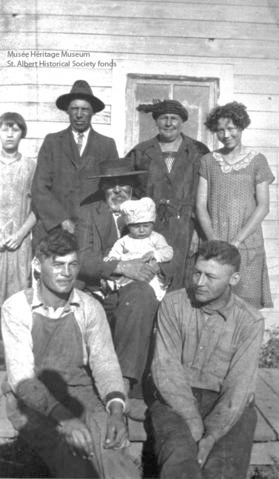An interview between Naomi Zurevinski and Nicole St-Onge, author of “He was neither a soldier nor a slave: he was under the control of no man” : Kahnawake Mohawks in the Northwest Fur Trade, 1790-1850, on the importance of oral history and what can happen if you study material you find interesting. To read St-Onge’s article from 2016 in the Canadian Journal of History/Annales Canadiennes D’Histoire, under open access for a limited time, click here. To read about the work St-Onge did for that article, as well as what sparked her interest in studying Mohawks’ role in the fur trade, click here.
Nicole St-Onge is no stranger to oral history, having done a lot of work with it in the past. However, at times she has been aware that her oral history work was not regarded with the same legitimacy as written sources.
“I think we are the products of a western culture where the written is paramount. I agree that oral history tells us as much about the present – the moment the interview is conducted – as it does of the past, but all sources have their shortcomings. One has to maintain a sense of critical analysis towards a source whether oral, written, or archeological,” St-Onge said.
With that in mind, St-Onge has some key guidelines she follows when working with oral history. First, she emphasized that signed consent granting permission from the interviewee is crucial, but secondly, she notes the importance of distributing oral sources.
“I always made sure copies of my life histories interviews were deposited in the archives, for others to use. I never believed in hording. All my oral tapes are deposited at the Provincial Archives of Manitoba. This way, the grandchildren and great-grandchildren of those interviewed can listen to their ancestors’ life histories. I also do not believe in anonymous interviews – it is important to know who is speaking and ‘who are their people,’” she said.
She also mentioned, rather comically, that her work with oral history has gotten her out of some not-so-glamourous work responsibilities.
“When I was hired at the University of Ottawa in 1990 I was a young historian with a dubious pedigree – two degrees in anthropology – that used Marxist theory to analyze oral sources. My colleagues found this intriguing enough to hire me, but for years were not convinced I actually did ‘real’ history,” St-Onge said. “So – for example – I was never asked to teach the second year undergraduate methodology courses or sit on the BA Committee. But – I did not consider this too great a hardship.”
St-Onge said that one of her favorite things about history is when she can recount and explain a historical event that provokes thought and reflection in the modern world. Although she hasn’t always been a historian, and initially studied anthropology, St-Onge said that she has always followed a path of studying what is interesting to her.
“My father is a geologist and gave me some advice – to study whatever interested me. There were few jobs in history in the 1980s and even fewer in anthropology. But I think even if I had not landed an academic job at the end of my PhD I would not have regretted the years of university study. They were a fun intellectually stimulating time of my life,” she said. “I gave the same advice to my daughter who pursued a BA and MA in religious studies, followed by a master’s in law from the University of Ireland. She is now working for an NGO in London, England… Who’d have thought it?”
From St-Onge’s scholarly work, it is clear that working with oral sources is something that can greatly aid historians in their work. Following what you’re passionate about, just might not be the worst thing either.
St-Onge’s work, “He was neither a soldier nor a slave: he was under the control of no man”: Kahnawake Mohawks in the Northwest Fur Trade, 1790–1850” is free to read for a limited time. Click here to read the article on CJH Online – http://bit.ly/CJH511a

Comments on this entry are closed.